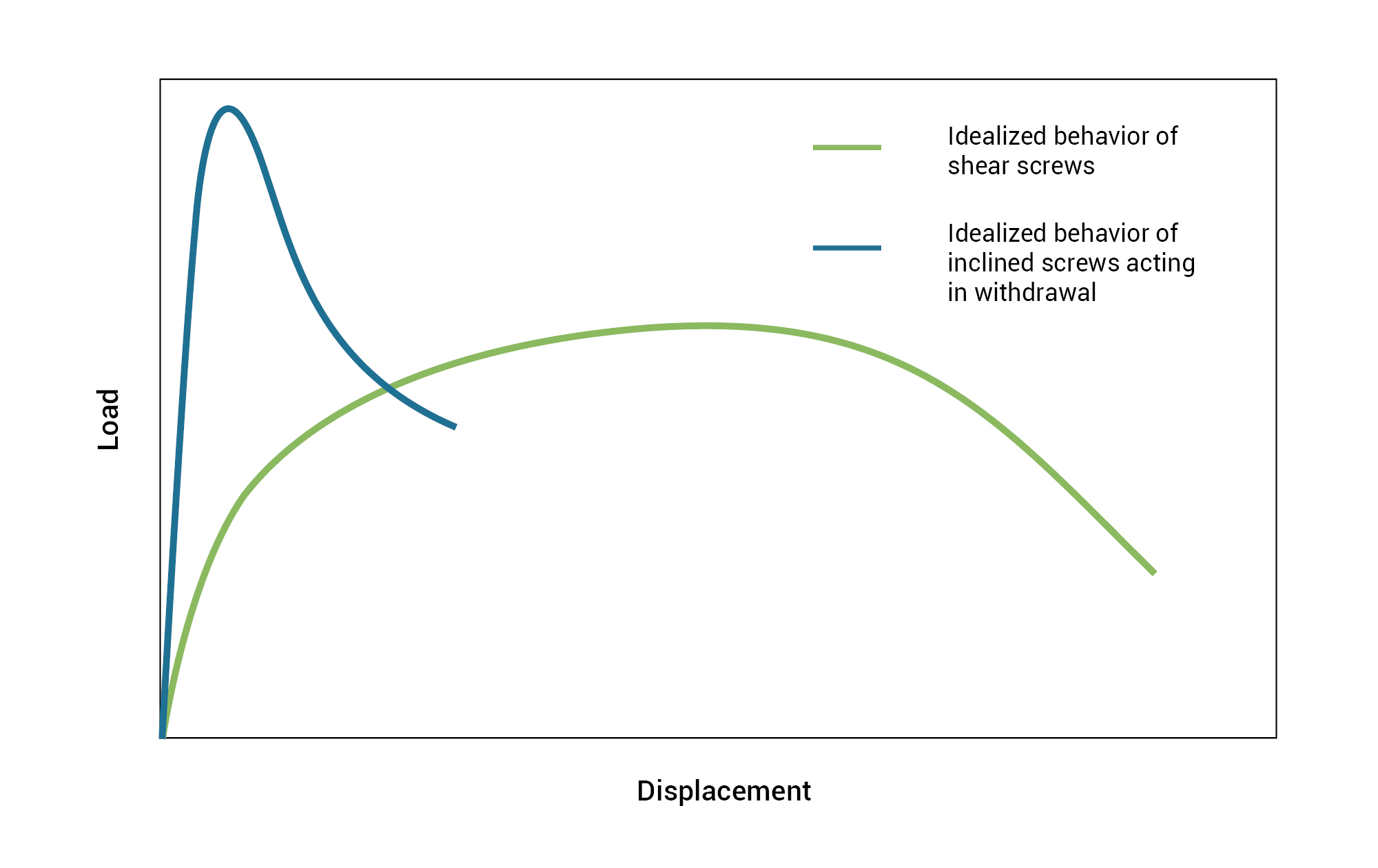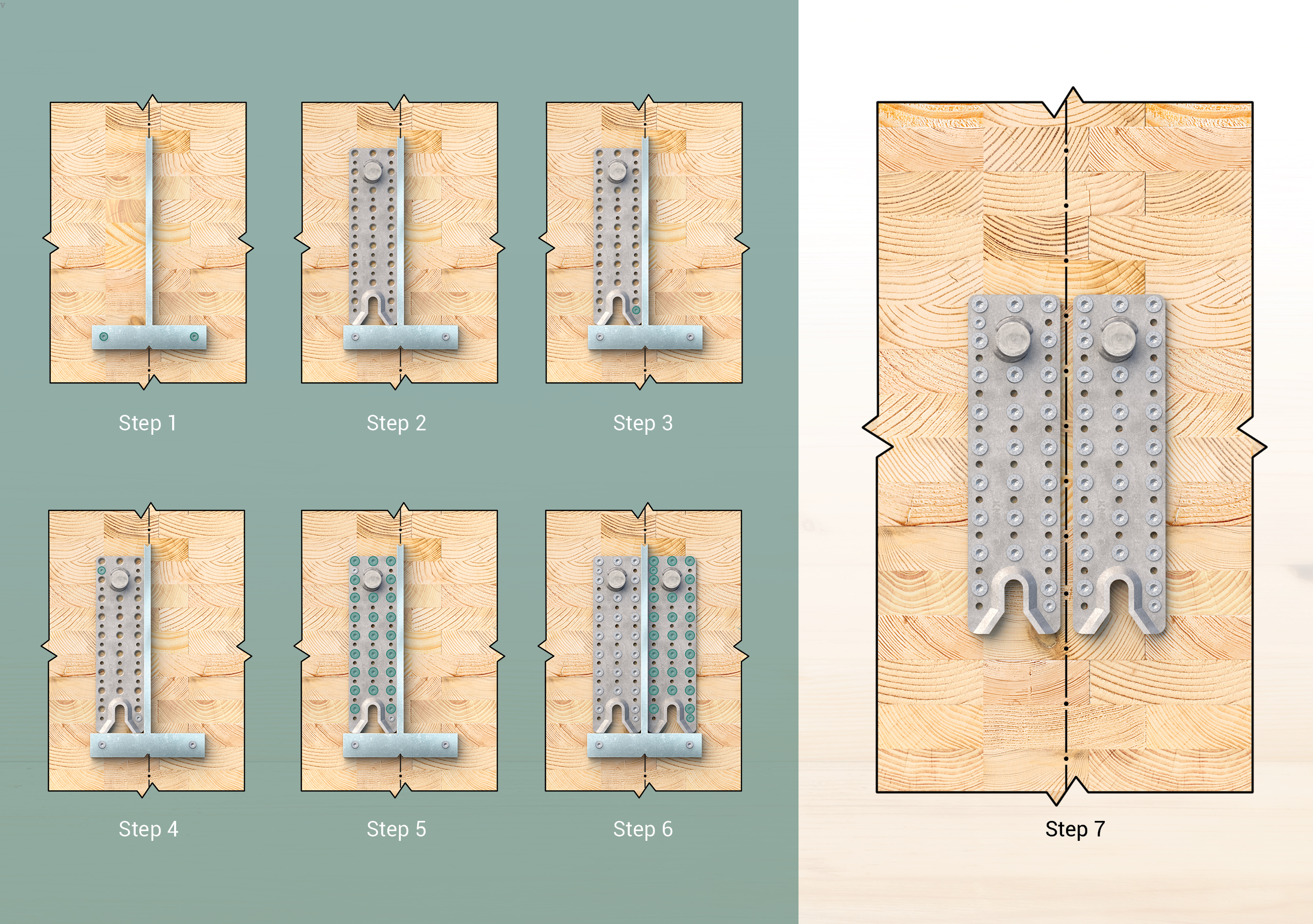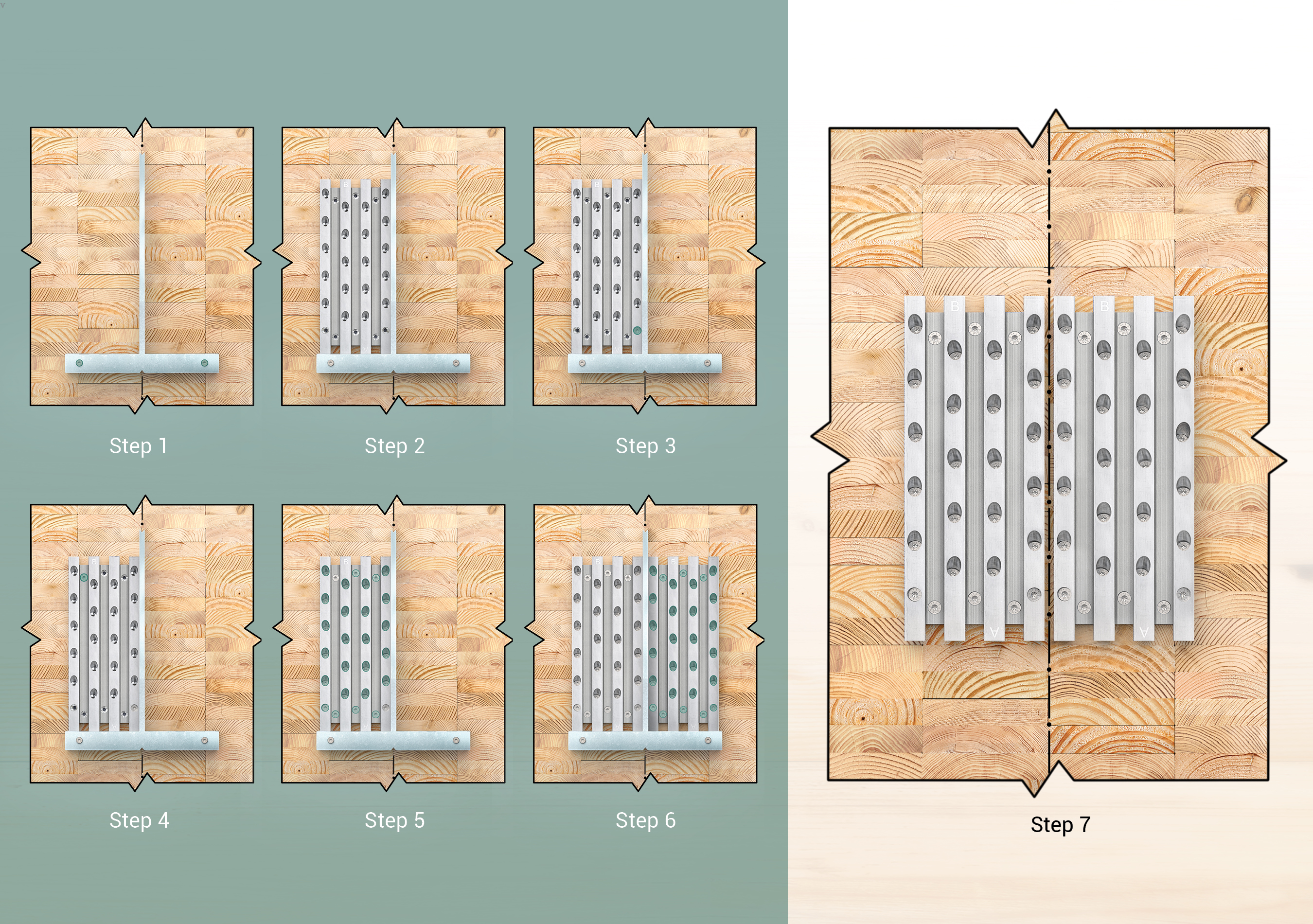Increasing load demands from technological advancement in modern mass timber construction and potential evolving building functions may warrant the need of double-beam hanger assemblies. This article explores the necessity, available options, and installation best practices for double-beam hanger systems, focusing on two popular types we supply at MTC Solutions—RICON S VS and MEGANT.
Approximately a 7-minute read
Necessity for Double-Beam Hanger Systems
Recent technological progress has enabled the increased adoption of longer-span (≥ 30 ft) cross-laminated and glued-laminated timber framing systems in mass timber structures, aligning with the industry’s pursuit of maximizing usable floor space. The resulting intensified beam-end reactions may surpass the capacity of single pre-engineered beam hangers readily available in the market, prompting consideration of a double configuration. This could also contribute to future-proofing buildings against rising load demands due to potential functional repurposing.
RICON S VS or MEGANT?
MTC Solutions offers a range of beam hangers, with RICON S VS and MEGANT standing out as popular choices. The selection of these connectors for specific projects depends on various design factors, such as beam dimensions and anticipated loads. For design guidance, refer to our Beam Hangers Design Guide.

Figure 1. Idealized load–displacement curves of shear and inclined screws
The distinctive designs of these two types of connectors result in different load transfer mechanisms. RICON S VS employs shear screws (installed at a 90° angle) that deform gradually with the load, as shown in Figure 1, leading to a more ductile and forgiving behavior that accommodates tolerance errors within certain boundary conditions. This proves advantageous for a double configuration, allowing the initially higher connector to adjust to the level of the lower connector and thus facilitating load sharing. However, precision remains crucial, and ductility should not be misconstrued as a justification for imprecision.
In contrast, the stiffer axially loaded inclined screws (installed at a 45° angle) of MEGANT—evident in a notably steeper slope and minimal deformation before reaching capacity in Figure 1—prevent adjustments. Achieving even load sharing in a dual assembly therefore becomes unattainable in cases of initial height variations during installation. Consequently, special attention must be given during installation to ensure height precision, with a tolerance of less than 1/16”.
Best Practices for Installing RICON S VS and MEGANT in a Double Configuration

Figure 2. Installation procedure for a double-RICON S VS assembly
The T-shaped jig, which can be fashioned from metal or even plywood, is a useful tool for simultaneously leveling and plumbing the connectors. The width of its blade can be customized based on the desired distance between the two connectors.
The preference for using small framing screws as setting screws over the specified connector screws to secure the beam hangers comes from their smaller and more precise nature. This choice becomes particularly crucial during end-grain installation, where it serves to minimize the risk of deviation as the screw encounters the late- and earlywood layers.

Figure 3. Installation procedure for a double-MEGANT assembly
Unlike the RICON S VS connector with holes for both setting and load-bearing screws angled at 90°, the MEGANT connector features holes angled at 90° in the top and bottom rows and holes angled at 45° in between. The choice of ASSY VG CSK screws over framing screws as setting screws is determined based on their greater capacity to hold the connector in place during the installation of inclined load-bearing screws. Inclined screws have the tendency to generate a lateral force during installation, pushing the connector up (or down). Framing screws are unlikely to resist such force, resulting in displacement of the connector.
For a comprehensive explanation of the installation processes for the RICON and MEGANT beam hangers, watch the following videos:
Double-beam hanger assemblies may prove essential to satisfy the ever-increasing load demands and future-proof mass timber buildings. For more information and design guidance, contact our Technical Support Team. 🙂
Register for a Technical Learning Session
Sign up for MTC Newsletter and keep up to date with all our progress.